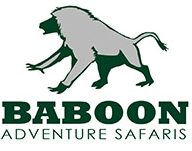Ngorongoro Crater National park
The Ngorongoro Crater was formed when a huge volcano exploded and consequently collapsed on itself about 2-3 million years. In 1978, it was declared among the UNESCO World Heritage Sites, and today it is the world’s biggest intact volcanic-caldera. it is approximately 18 kilometers in diameter and its walls standing at a height range of 400 to 610 meters. Its formation and large number of wild animals as well as its geographical have made it one of the greatest world’s natural wonders.
Wildlife in the Ngorongoro Crater
Because of the enclose nature of this crater, it has formed its unique ecosystem comprised of a variety of plants including the yellow fever trees and animals. The crater’s floor which is rich in minerals with open grasses is home to a very large number of zebras, wildebeests, buffaloes, Thomson’s gazelles, tsessebe / topi, Grant’s gazelles, black rhinos and buffaloes. On the other hand giraffes and impalas are not found here and it’s assumed that perhaps it’s because of lack of trees on which they foliage. This high number of predators supports the highest number of predators on the African continent including lions, cheetahs, leopards, jackals and the bat eared foxes. The park receives several visitors so game viewing may be interrupted by the large crowd of people.
The Olduvai Gorge
The Ngorongoro Conservation Area in addition to being a great place to encounter some of Africa’s wildlife species is also a place of archeological significance. Scientific research has proved that millions of years ago a number of hominid species have lived in this area following the discovery of fossils within a volcanic rock dated 3.6 million years back. The Olduvai Gorge which is thirty (30) miles long is a narrow steep sided valley within the Great Rift Valley. It is among the world’s most important ancient sites, and has played a very big role in the understanding of human evolution. There is a museum that has all the findings well documented and replicas of the hominid fossils that were unearthed at this site including the Laetoli footprints (which is the oldest ever discovered footprint on the world).
How to get to the Ngorongoro Crater
There are daily light-aircraft flights connecting to Arusha and Lake Manyara and then from there you will be met by your safari guide in a 4WD vehicle who will guide your safari in the crater. However you may choose to drive all the way to the crater.
Where to Stay on your Safari to the Ngorongoro Crater
Inside the crater, there isn’t any accommodation, however, beyond the crater rim are a number of options ranging from the budget, mid-range to the luxury facilities a number of them offering stunning views into the crater below. Some of these include: The Ngorongoro Crater Lodge, Ngorongoro Sopa Lodge, Ngorongoro Wildlife Lodge, Ngorongoro Serena Safari Lodge and the Rhino Lodge. Additional accommodation include: Gibb’s Farm, Ngorongoro Farmhouse Lodge and Plantation Lodge
Please feel free to contact us for an opportunity to explore the Ngorongoro Crater one of the world’s Natural Wonders and we shall organize for you a memorable and exciting safari
